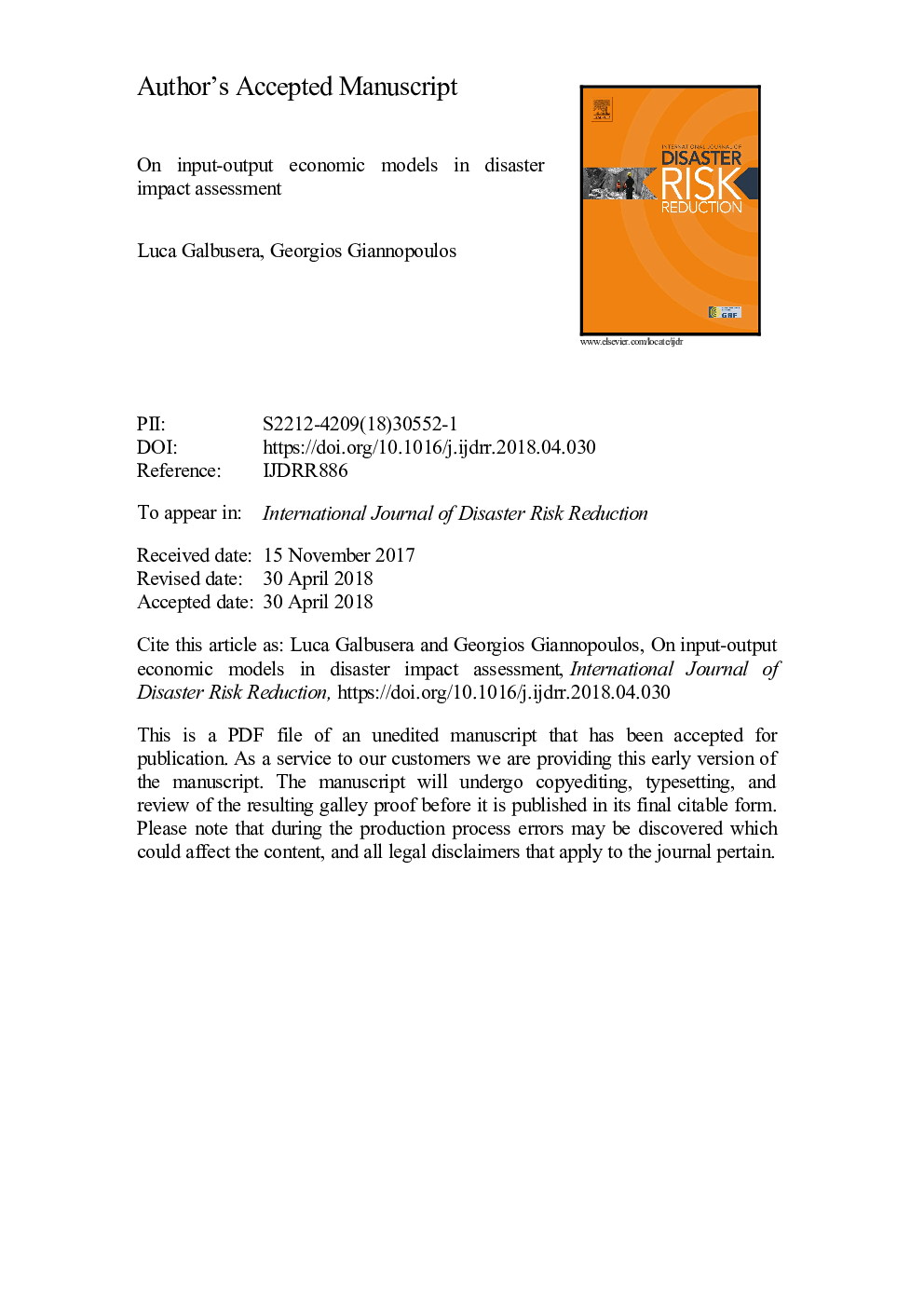| Article ID | Journal | Published Year | Pages | File Type |
|---|---|---|---|---|
| 7471235 | International Journal of Disaster Risk Reduction | 2018 | 19 Pages |
Abstract
During the last decades, input-output (I/O) economic models have assumed a prominent role in disaster impact analysis and resilience assessment. Rooted in general equilibrium theory and economic production theory, they catalyse attention on the distinction between direct economic losses and ripple effects that may be generated inside a multi-industry system as a consequence of perturbations. Empowering the I/O analysis framework and overcoming some of its inherent limitations is crucial in order to successfully approach emerging disaster assessment challenges, such as multi-regional loss quantification and the investigation of shock responses in global supply chains. In this paper, we review and discuss how different disaster modeling aspects have been incorporated in recent contributions exploiting I/O techniques, taking into account both demand- and supply-sided perturbation triggers, static and dynamic representations, as well as the assessment of economic resilience.
Related Topics
Physical Sciences and Engineering
Earth and Planetary Sciences
Geophysics
Authors
Luca Galbusera, Georgios Giannopoulos,
